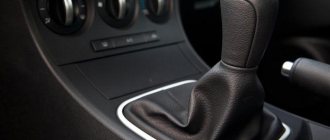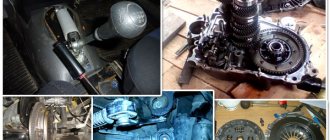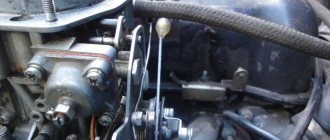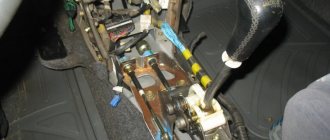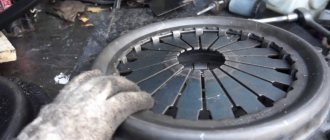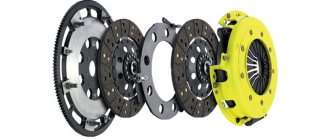Sooner or later, any motorist is forced to recognize the appearance of problems in the operation of the gearbox. Mechanical transmissions break down especially often, and the malfunction can occur spontaneously and unexpectedly, but more often than not, gradually, manifesting itself in various uncharacteristic sounds when shifting gears, as well as difficulties in turning them on.
If you cannot move with the engine running, you will have to find out the reason and eliminate it.
Reverse gear does not engage: common breakdowns
So, if engaging reverse gear is difficult or completely impossible, this breakdown is a common problem that can be encountered in different vehicles when changing gears.
Moreover, the rear does not engage both on manual and automatic transmissions (the reverse speed of the automatic transmission has disappeared)
Naturally, in such a situation, it is important to discover the cause of the malfunction and eliminate the breakdown, since it is simply impossible to operate the car normally without reverse gear (the vehicle is actually deprived of reverse gear). Let's figure it out
Let's start with a manual transmission and consider the question of why reverse gear does not engage in a manual transmission. First of all, with a manual transmission the reverse gear fails much more often than with an automatic transmission. As a rule, the first signs of problems are a grinding, crackling or crunching sound in the reverse gear when engaged, the reverse gear is difficult to engage, it is difficult to engage the speed after a while, etc.
As for the main malfunctions, we can highlight the following:
The clutch does not disengage completely. As you know, the clutch connects the engine and the gearbox, and at the moment of changing gears the driver must depress the clutch pedal and “disconnect” the internal combustion engine from the gearbox. After engaging the gear, the pedal is released, the clutch “closes” and the torque is again transmitted to the wheels.
So, if the clutch is not completely disengaged, the gearbox is not completely disconnected from the engine. This leads to the fact that all gears are difficult to engage. At the same time, on many cars, first speed and reverse do not have synchronizers. As a result, clutch problems are most noticeable when engaging reverse gear.
In such a situation, when trying to engage a gear, a crunching and grinding noise is heard in the box
To eliminate the breakdown, you need to pay special attention to the clutch (condition of the clutch disc, basket, release bearing, etc.). You also need to check the clutch adjustments, the quality of the pedal, etc.
The oil level in the gearbox is low or the gear oil has lost its properties. As practice shows, there is a common misconception among drivers that the manual transmission is filled with oil for the entire service life of the car. In fact, a maximum of 100 thousand km. Even the highest quality gear oil becomes unusable. And this is subject to fairly gentle operation.
If the car is used in difficult conditions (driving around the city, irregular pace, constantly switching speeds “up” and “down”, short trips, temperature changes, etc.), then the oil in the box requires replacement every 50-60 thousand. km. The fact is that the properties of the liquid change, additives are activated, dirt, products of mechanical wear of the box and various deposits accumulate in the oil.
The gearbox linkage needs to be adjusted; the rods or gearbox drive levers are deformed. Often, it is after diagnosing the condition of the rocker that it becomes clear why reverse gear on a Lada and various foreign-made cars (especially old ones or with high mileage) does not engage. Owners of front-wheel drive VAZ models are well aware that a poorly adjusted rocker is the reason why the reverse gear does not engage or is knocked out.
The solution in such a situation is to adjust the manual transmission gate, which can significantly improve the clarity of the inclusions and obtain the necessary softness. Also, in some cases, owners remove the standard mechanism and install a short-throw slide, but in this case you need to be prepared for the need for more careful adjustment. As for the gearbox rods and drives, these elements must be inspected for possible damage or breakage, after which they are replaced.
Design features of the gearbox. Often on budget cars, reverse and first gears do not have synchronizers. The absence of these elements, on the one hand, simplifies the design of the box, but on the other hand, difficulties arise when engaging reverse gear and first speed.
VAZ 2110 16 valve gears don't engage well - reasons
I have the same *****, I haven’t solved the problem yet, let me know if anything is resolved
As soon as I solve the problem I will post it.
Check the clutch pedal travel and make sure there is nothing obstructing it. Happens.
No, everything is fine, I checked it right away, right down to the floor. It seems like there might be something wrong with the box, damn it.
I have exactly the same problem. It hits something. If you repress the clutch, it sometimes helps. It happens with reverse speed too. I've been driving this way for almost a year now, and I'm already used to it. In the workshop they said the disease is ten-thousand and you can live..
I’m not going to leave this matter like this, otherwise sometimes when it doesn’t stick in all the way, out of habit I still start to move away and in the box the gears are clearly not fully engaged and there’s a crunching sound, and I’m afraid this may lead to the box being repaired


